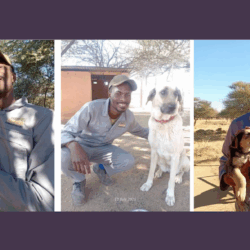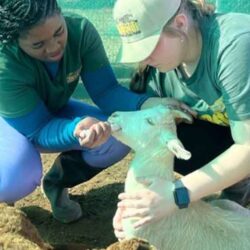Vet Techs at CCF
-

- by Charlotte Lapointe and Kaylen Leggett May 28, 2024

We are Vanier College students currently completing our third and final year in Animal Health Technology, soon to become veterinary technicians. Our program requires that we complete two five week-long internships, one taking place in a clinical setting, and the other in a specialized setting of our choosing. We were presented with the opportunity to complete the latter in Otjiwarongo, Namibia, under the guidance and supervision of the Cheetah Conservation Fund’s veterinary team. Ecstatic at our being selected, we flew out from Montreal, Quebec on March 16th and landed in Windhoek, Namibia two days later.
Over the next five weeks, we took part in the care and treatment of a variety of animals that call CCF their home, notably sheep, goats, cattle, horses, dogs, and of course cheetahs. This article provides the highlights of our time as members of CCF’s veterinary team, as well as what it means to be a veterinary technician working with these very different species.
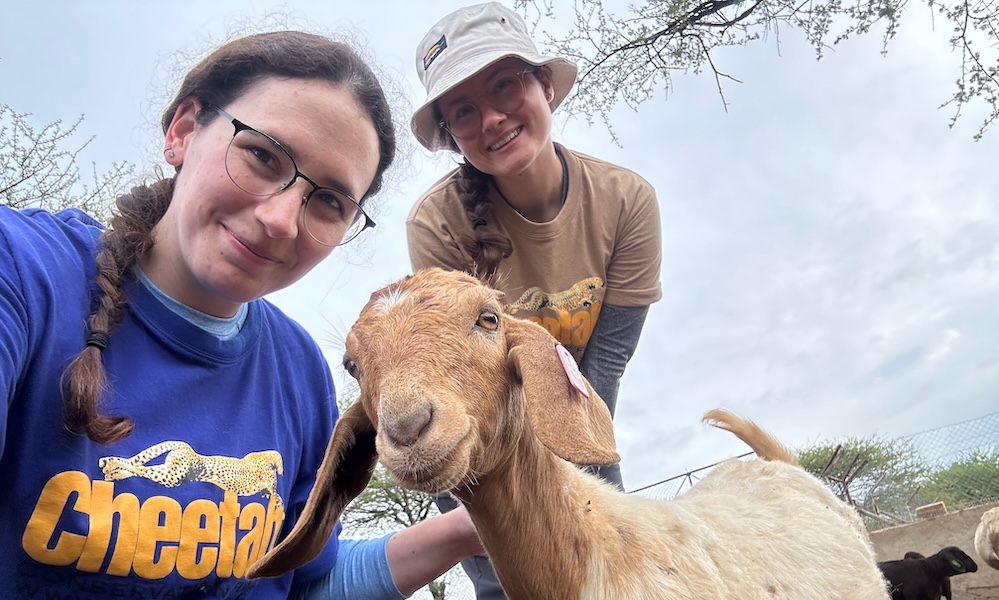
Sheep and Goats
A lot of our work centered around the care of the sheep and goats housed at CCF. We had a week of rain with the wet ground actually softening their hooves, resulting in many presenting with lameness from thorns having embedded themselves in their feet. We took great care in singling out the limping individuals, catching them and then removing the thorns and cleaning out the wounds. We also took part in a round of routine vaccinations, where we administered subcutaneous injections to roughly 300 sheep and goats in one morning. This vaccination clinic was one of the more memorable moments of our stay, as people from other departments also came to help. It was a morning where everyone involved worked together, even though it was slightly outside of their field, and we all finished feeling satisfied and proud of our work.

Dogs
A big part of CCF’s mission in conserving cheetahs in the wild is centered around their “dogs saving cats” approach, through their livestock guarding dog program. Anatolian shepherds and mongrel dogs are bred, housed, and trained at CCF, while being treated and cared for by the on-site veterinary staff. When they are old enough to be given to farmers, they spend their days with their herd, protecting the livestock from predators such as leopards, hyenas, jackals and, in some instances, cheetahs. This partnership has proven to be very effective in protecting cheetahs from people, who in the past would kill them for going after their livestock. Our work with the dogs consisted of hip x-rays, pregnancy checks by ultrasonography, wound management, dental scaling and polishing under anesthesia, and in a scary turn of events, providing nursing care after a snake bite.
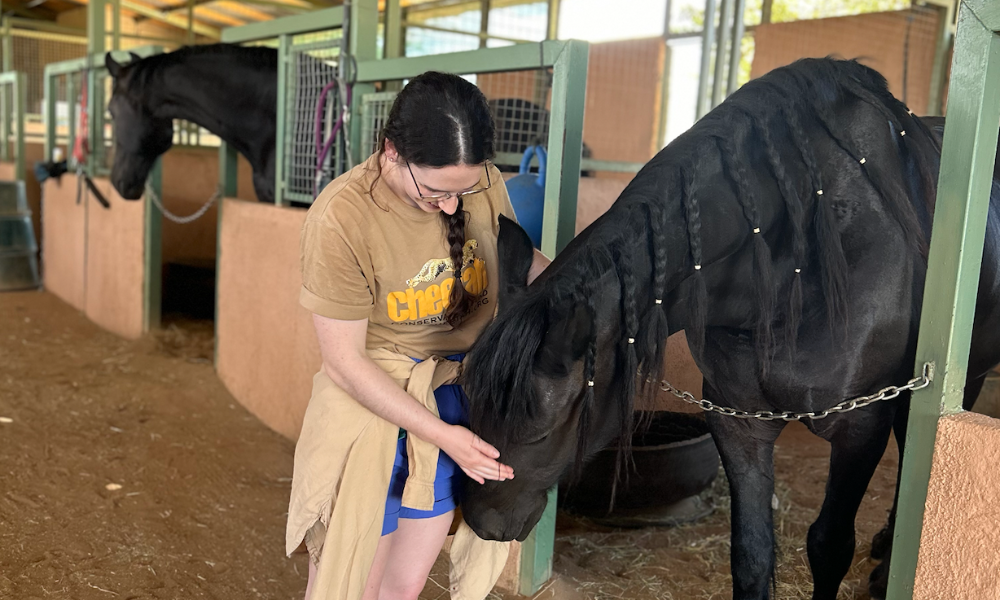
Horses
CCF’s horses are cared for by a wonderful team of individuals, who we were lucky enough to work alongside with and learn from. Our tasks pertaining to CCF’s resident horses mainly involved general husbandry, notably brushing, hoof picking, and preparing food. Two new horses were rescued from neglectful conditions during our time there, and required a good deal of medical management in order to avoid what we call “refeeding syndrome”, which is what happens to animals that are fed too quickly after a long period of starvation. Our tasks in this case consisted of intravenous fluid therapy, drug administration, and educating the handlers about how and what these horses should be fed for the next few weeks.
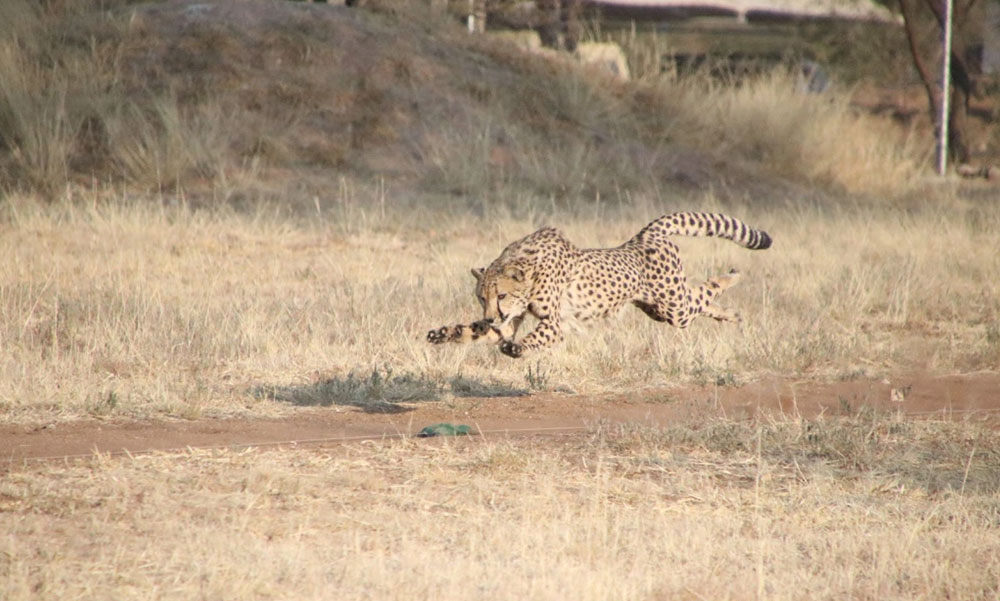
Cheetahs
We were trusted to assist with the monthly blood collection of two of the resident cheetahs. This consisted of both of us getting the chance to occlude the coccygeal vein of a cheetah while the CCF veterinary technician collected a blood sample to monitor the health of these cheetahs. Part of what made this so interesting was that the coccygeal vein is not one that is commonly used in smaller animals, so it was a learning experience to see the steps and techniques for this blood draw. One of the other factors to the cheetah care that we found impressive was that, due to the size and nature of the cheetahs, they were trained over time for their care to be somewhat cooperative. They have been trained over time to place themselves in an accessible, but still safe for all parties involved, spot that allows them to receive veterinary care. This is all while receiving nice meat treats as a distraction while the talented veterinary team does their work. Throughout our schooling, we were being taught to apply “fear free methods” in order to work towards making veterinary care a less stressful experience for our patients, and here we were seeing all these teachings being used on the cheetahs. If it can be taught to cheetahs, it can be taught to our domestic animals.
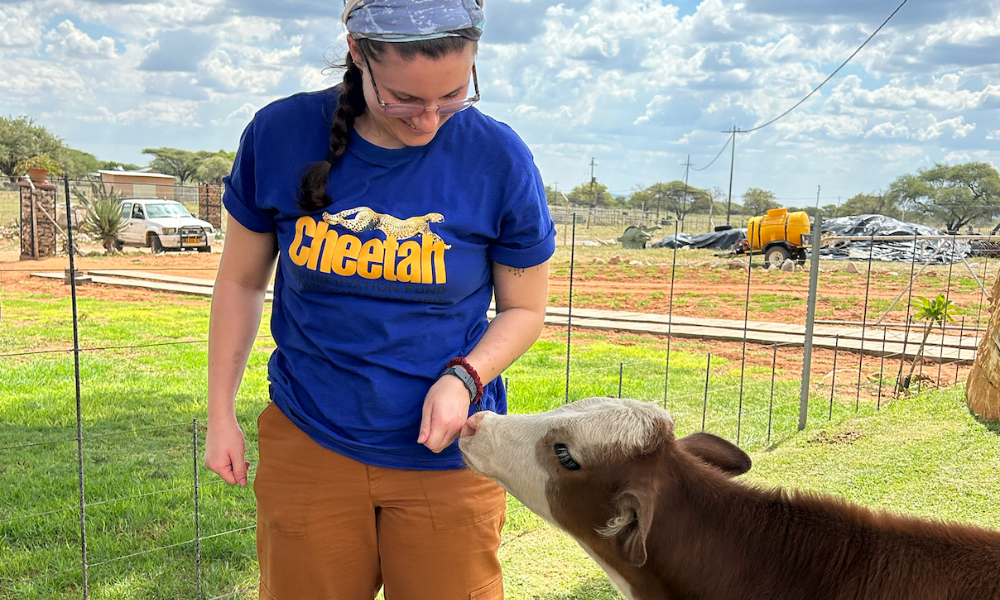
Cattle
Part of CCF’s work in cheetah conservation is having “model farms” in order to demonstrate that farmers and their livestock can coexist with the predators around them. Due to the large amount of livestock animals, we got to have some memorable experiences of driving to the further farms and getting to treat calves and cows alike. Both of us are from more of a “small animal” (meaning cats and dogs) background, so getting to work with animals like cattle and even goats was a very cool, new learning experience. The veterinarians and technicians were great at explaining the new information to us and teaching us how to do the new techniques, or in some cases, old techniques in new ways. Every call was a new learning experience, which was everything that we wanted in our internship.

This experience truly exceeded our expectations in every way. We gained valuable knowledge and experience within our field, learning new techniques and practicing old ones working alongside animals with which we became increasingly comfortable. We also grew as individuals through working with and living alongside people coming from so many different cultural and educational backgrounds. We formed new friendships, sharing our experiences growing up across the world from each other, and made memories that we know will last a lifetime. This experience has allowed us to improve as veterinary technicians, but also as individuals stepping into the next chapter of our lives feeling more confident about our ability to adapt to new environments and situations. We leave CCF feeling incredibly grateful for having been given this opportunity, and pleased with the work we were able to accomplish.
"Cheetah Tracks" Newsletter Sign-Up
Stay updated on the activities of Cheetah Conservation Fund in Canada, Namibia and Somaliland. We send semi-annual newsletters and info about special events and initiatives. We will not share your email address with any other organization.
Related Reading
-
July 22, 2025
From UNAM Graduate to Livestock Intern in the Field. -
June 9, 2025
Vanier Student’s Internship Experience at CCF
